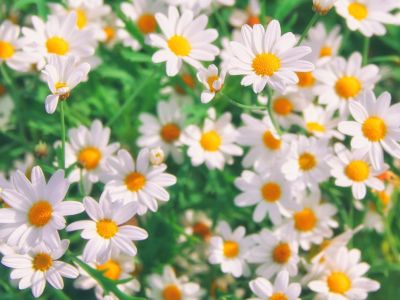Identifying Chamomile
There are two kinds of chamomile. The first is Roman chamomile (Chamaemelum nobile) and the other is German chamomile (Matricaria recutita). The Roman variety is the true chamomile but German chamomile is used herbally for nearly the same things. The steps for growing Roman chamomile and growing German chamomile are also nearly identical. Roman chamomile is also known as Russian chamomile and English chamomile. It is a creeping ground cover that grows like a mat. It has small daisy like flowers with yellow centers and white petals. The leaves are feathery. It is a perennial. German chamomile looks similar to Roman chamomile with the differences being that German chamomile grows upright to the height of about 1 to 2 feet (30 to 61 cm.), and is a reseeding annual.
How to Grow Chamomile Herb
As stated, both kinds of chamomile grow in similar conditions so, from here on, we will refer to them as just chamomile. You can grow chamomile in USDA plant hardiness zones 3 to 9. Plant chamomile in the spring from either seeds or plants. It’s easier to establish chamomile herb in your garden from plants or divisions than from seeds, but growing chamomile from seed is also relatively easy. Chamomile grows best in cool conditions and should be planted in part shade, but will also grow full sun. The soil should be dry. Once your chamomile is established, it needs very little care. Like most herbs, chamomile grows best when it is not fussed over. Too much fertilizer will result in lots of weakly flavored foliage and fewer flowers. Chamomile is drought tolerant and only needs to be watered in times of prolonged drought. For the most part, chamomile is not affected by many pests. It is often recommended as a companion plant to plant in the vegetable garden as its strong scent often keeps pests away. That being said, a chamomile plant weakened by lack of water or other issues may be attacked by aphids, mealybugs or thrips.
